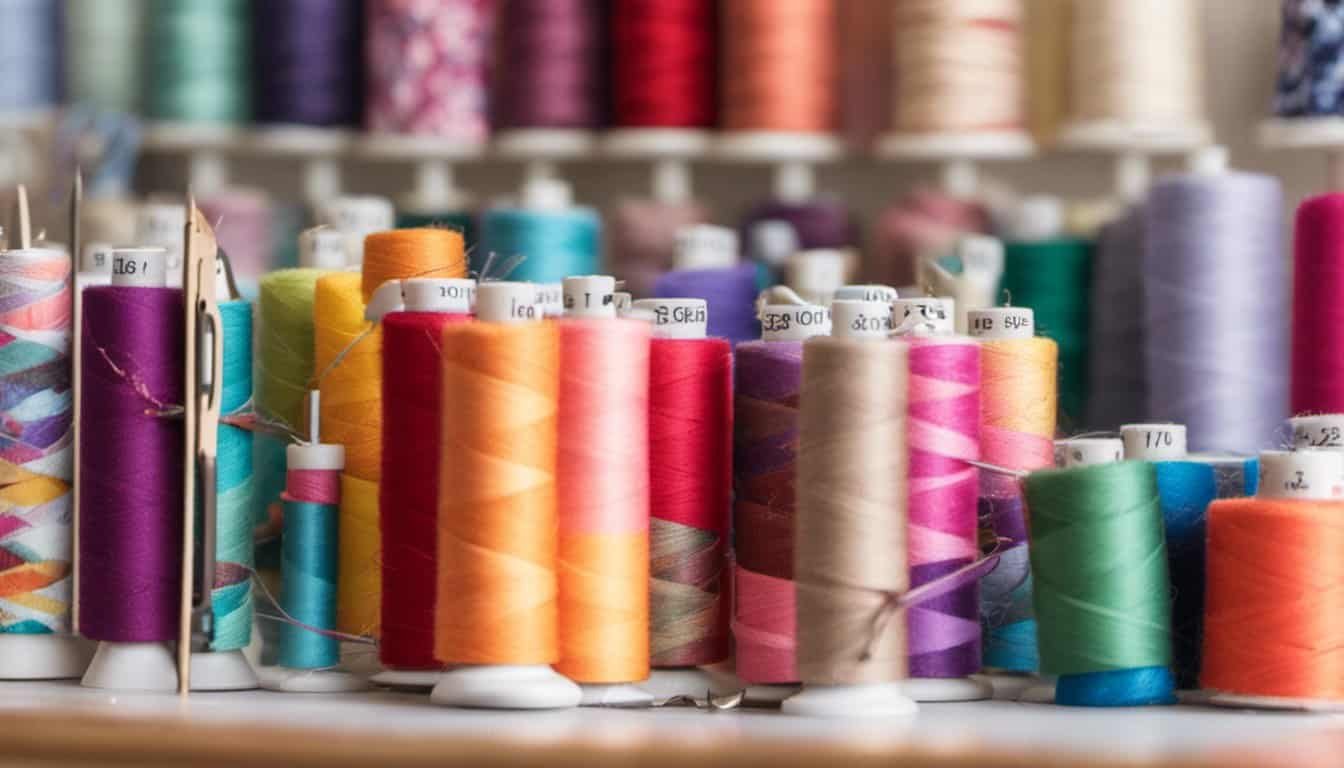Sewing with linen is a fantastic way to embrace sustainability without sacrificing style. You’ll find that linen’s natural fibers not only reduce your environmental footprint but also bring a timeless elegance to your projects. Whether you’re crafting your own garments or home décor, linen offers durability and breathability that stands the test of time.
By choosing linen, you’re investing in a fabric that’s renewable and biodegradable, making your creations both beautiful and eco-friendly. You’ll love how easy it is to work with, offering a smooth sewing experience that’s perfect for beginners and seasoned sewists alike. Let’s explore how you can incorporate linen into your sewing projects and contribute to a more sustainable wardrobe and lifestyle.
Benefits of Sewing with Linen
Choosing linen for your sewing projects offers numerous advantages. From environmental gains to the lasting quality of your creations, linen stands out as an excellent fabric choice.
Environmental Sustainability
Linen is a highly sustainable fabric for several reasons:
- Natural Fiber: Derived from the flax plant, linen is biodegradable and renewable.
- Low Water Usage: Flax cultivation requires significantly less water compared to cotton.
- Minimal Pesticides: Flax plants naturally resist pests, reducing the need for chemical pesticides.
- Carbon Footprint: Linen production emits fewer greenhouse gases, contributing to a lower overall carbon footprint.
These factors make linen an eco-friendly option that supports sustainable living.
Durability and Longevity
Linen’s robust nature ensures your projects stand the test of time:
- High Tensile Strength: Linen fibers are stronger than cotton, providing superior durability.
- Resistance to Wear: Fabric maintains its integrity, even after extensive use and washing.
- Timeless Aesthetic: Linen’s classic appearance doesn’t easily go out of style, ensuring your creations remain fashionable.
- Reduced Shrinkage: Linen fabric retains its shape, minimizing shrinkage and maintaining fit over time.
Selecting linen means investing in long-lasting, high-quality pieces that endure daily wear and maintain their charm.
Choosing Sustainable Linen Fabric
Selecting sustainable linen fabric ensures your sewing projects are eco-friendly and high-quality. Your choices directly influence environmental impact and the longevity of your creations.
Organic vs Conventional Linen
Opt for organic linen to minimize environmental harm. Organic cultivation uses up to 80% less water compared to conventional methods. Additionally, it eliminates synthetic pesticides and fertilizers, reducing soil and water pollution. Conventional linen farming often relies on chemicals that can degrade ecosystems and harm biodiversity. By choosing organic, you support sustainable farming practices that promote healthier environments and safer textiles.
Sourcing Locally
Source your linen locally to decrease transportation emissions and support nearby economies. Local suppliers often provide fresher, higher-quality fabrics with lower carbon footprints. For example, purchasing from a nearby mill reduces shipping distances by up to 500 miles, cutting greenhouse gas emissions significantly. Additionally, local sourcing fosters community resilience and ensures greater transparency in the production process. Prioritize local vendors to enhance sustainability and strengthen your regional economy.
Essential Tools for Sewing Linen
Sewing linen requires specific tools to achieve the best results. Equip yourself with these essentials to handle this durable fabric effectively.
Sewing Machine Settings
Configure your sewing machine to suit linen’s characteristics. Follow these settings for optimal stitching:
| Setting | Value |
|---|---|
| Stitch Length | 2.5-3 mm |
| Tension | 4-5 |
| Stitch Type | Straight or slight zigzag |
Adjust your machine accordingly, ensuring smooth and consistent seams without puckering or fraying.
Needles and Threads
Selecting the proper needles and threads enhances your sewing experience with linen:

- Needles: Use size 80/12 or 90/14 universal needles to accommodate linen’s heavy weave.
- Threads: Opt for polyester or cotton-wrapped polyester threads for strength and durability.
- Color Options: Match your thread color for a seamless finish or choose contrasting colors for decorative stitching.
Ensure your threads align with the machine settings to maintain high-quality stitches.
Sustainable Sewing Practices
Embracing sustainable sewing practices enhances your linen projects’ environmental impact. Implement these strategies to create eco-friendly and efficient sewing experiences.
Reducing Waste
Minimizing fabric waste conserves resources and promotes sustainability in your sewing projects.
- Plan Layouts Efficiently: Arrange patterns to maximize fabric usage, fitting multiple pieces together seamlessly.
- Reuse Scraps: Transform leftover linen into accessories like bookmarks, napkins, or patches.
- Choose Versatile Patterns: Select designs that require minimal fabric and allow for creative adjustments.
- Utilize Zero-Waste Patterns: Adopt patterns specifically designed to eliminate fabric waste altogether.
- Repurpose Existing Garments: Modify or upcycle old clothes to create new linen pieces, reducing the need for additional fabric.
Eco-Friendly Finishing Techniques
Applying sustainable finishing techniques ensures your linen creations remain environmentally responsible from start to finish.
- Natural Dyes: Use plant-based or low-impact dyes to color your linen without harmful chemicals.
- Low-VOC Finishes: Select finishing products with low volatile organic compounds to reduce environmental pollution.
- Biodegradable Stabilizers: Incorporate biodegradable stabilizers in embroidery to maintain eco-friendliness.
- Hand Finishing: Opt for hand-finishing methods over machine processes to decrease energy consumption.
- Water-Efficient Washing: Implement washing techniques that minimize water usage and prevent waste.
Caring for Linen Garments
Properly maintaining your linen garments ensures their longevity and keeps them looking fresh. Follow these care tips to preserve your sustainable creations.
Washing Linen
- Temperature: Wash linen in cold or lukewarm water to prevent shrinkage and color fading.
- Detergent: Use mild, bleach-free detergents to maintain fiber integrity.
- Cycle: Select a gentle cycle to reduce wear and tear on the fabric.
Drying Linen
- Air Drying: Air dry your linen garments by laying them flat or hanging them in a well-ventilated area. This method minimizes wrinkles and preserves fabric strength.
- Machine Drying: If using a dryer, choose a low heat setting and remove garments while slightly damp to reduce shrinkage and wrinkling.
Ironing and Pressing
- Iron Setting: Use a high-temperature iron with steam for crisp, smooth results.
- Technique: Iron linen while it’s still slightly damp for best results. Alternatively, use a steam iron to remove wrinkles without direct contact.
Storing Linen
- Hanging: Hang linen garments on sturdy, padded hangers to maintain shape and reduce wrinkles.
- Folding: If folding, ensure garments are completely dry and store them in a cool, dry place to prevent mildew.
- Avoid Overcrowding: Allow space between garments to minimize creasing and promote air circulation.
Handling Stains
- Immediate Action: Treat stains promptly by blotting with a damp cloth. Avoid rubbing, which can spread the stain.
- Spot Cleaning: Use a mild detergent or a vinegar-water solution for spot cleaning. Test on an inconspicuous area first to ensure fabric safety.
General Tips
- Frequency: Wash linen garments only when necessary to preserve fibers and reduce environmental impact.
- Repair: Address minor damages like loose seams or small tears immediately to extend the life of your garments.
- Avoid Overloading: Whether washing or drying, avoid overloading machines to ensure thorough cleaning and gentle handling of fabrics.
« 10 Best Fabrics for Quilting Projects in 2025 You Can’t Miss
10 Jaw-Dropping Modern Quilt Designs That Will Ignite Your Next Project »
By following these care practices, your linen garments remain durable, stylish, and eco-friendly, supporting a sustainable lifestyle.
Conclusion
Choosing linen for your sewing projects is a wonderful way to embrace sustainability without sacrificing style. You’ll enjoy creating beautiful pieces that are not only eco-friendly but also built to last. By incorporating linen into your wardrobe and home décor, you’re making a positive impact on the environment and supporting sustainable practices. So grab your fabric and start sewing with linen—you’ll find that it’s a rewarding and responsible choice for your creative endeavors.

















